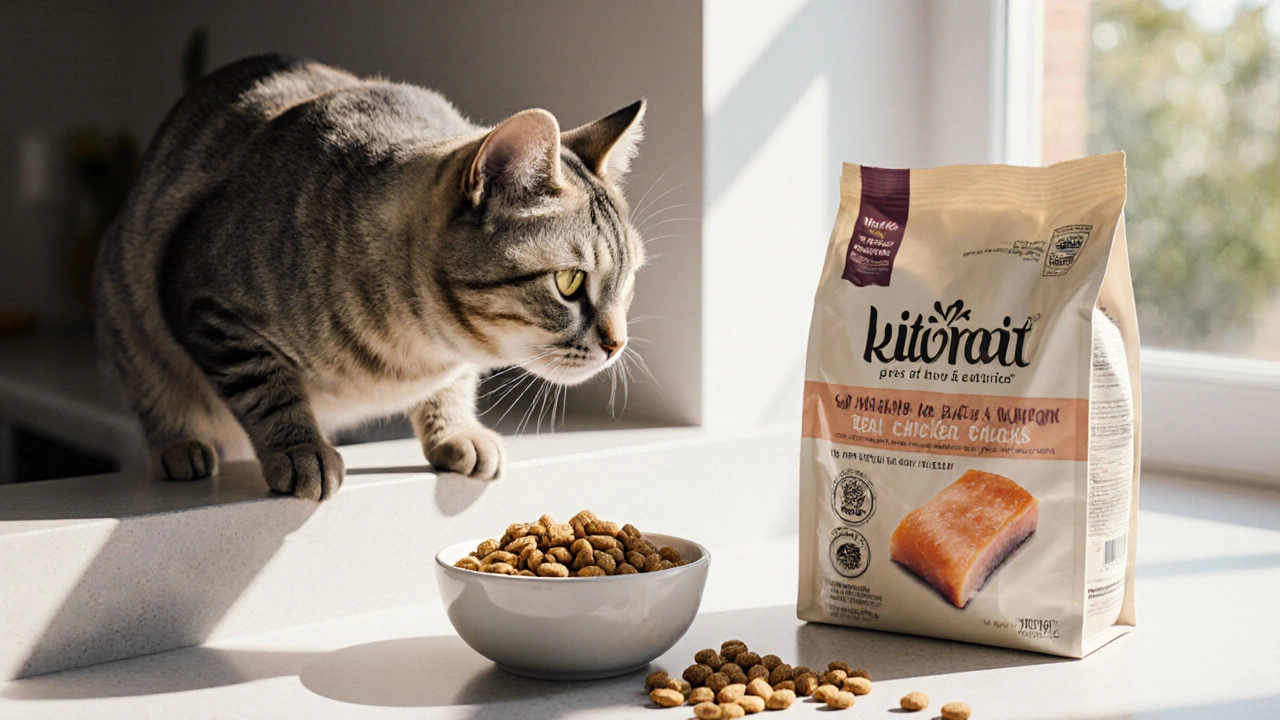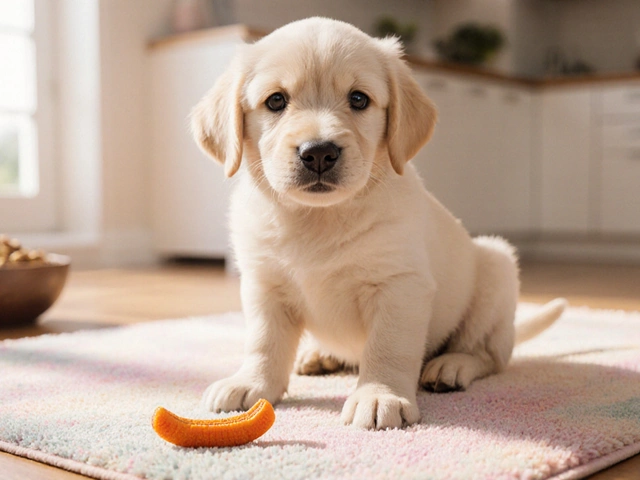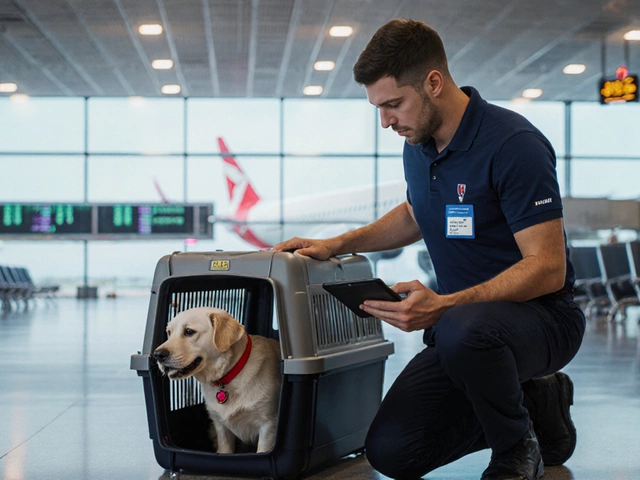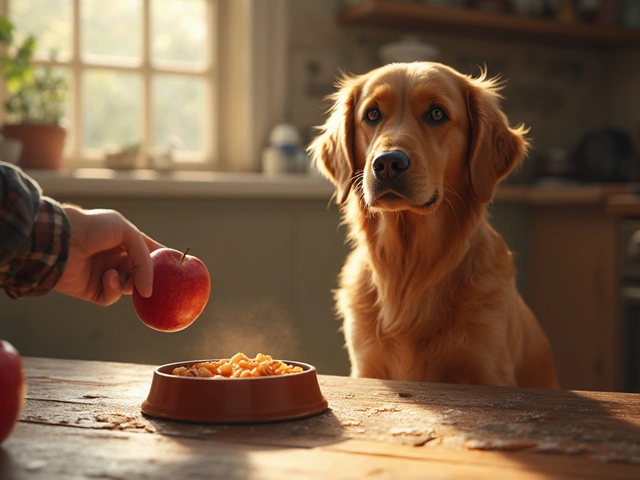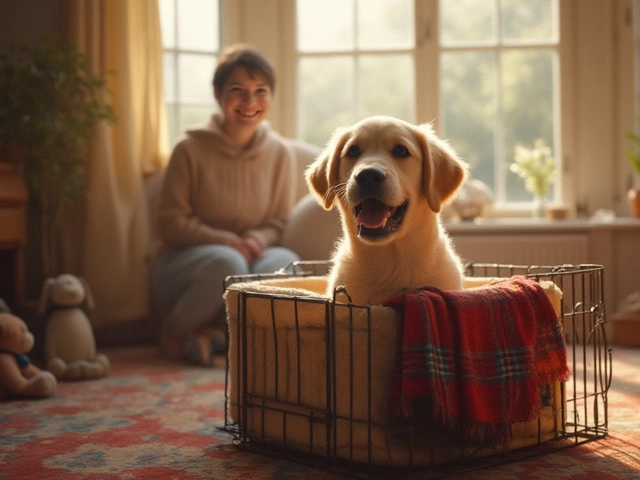Cat Water Calculator
Keep Your Cat Hydrated on Dry Food
Cats on dry food diets need extra water to prevent dehydration and urinary issues. This calculator estimates how much additional water your cat needs daily.
Your Cat's Hydration Status
Your cat needs additional water to stay hydrated.
Total Water Needed
0
ml per day
From Dry Food
0
ml per day
Additional Water Needed
0
ml per day
Many owners wonder if dry cat food can meet a cat's needs. The short answer is: it can, but only if you pick the right product and stay mindful of a few hidden pitfalls. Below we break down what a cat really needs, what dry food gives you, where it falls short, and how to keep your feline thriving on a kibble‑only regime.
Key Takeaways
- Cats are obligate carnivores; they need animal protein, taurine, and adequate moisture.
- High‑quality dry cat food provides convenient nutrition but often lacks sufficient water and can be low in certain amino acids.
- Look for dry food that lists real meat first, includes added taurine, and meets AAFCO nutrient profiles.
- Monitor your cat’s urine output, coat condition, and weight to catch early signs of dehydration or nutrient gaps.
- Supplement with wet food, broths, or specific additives when the dry diet doesn’t cover moisture or extra nutrients.
Understanding Cat Nutrition
Felines are obligate carnivores are animals that must obtain certain nutrients, especially taurine, arachidonic acid, and vitamin A, directly from animal tissue. Unlike dogs, cats cannot synthesize these compounds from plant sources. A balanced diet must therefore provide:
- High‑quality animal protein (minimum 30% of dry matter).
- Essential amino acids - taurine being the most critical for heart and eye health.
- Fat for energy and essential fatty acids.
- Vitamins and minerals in the ratios defined by the AAFCO (Association of American Feed Control Officials) nutrient profiles.
- Enough moisture to support kidney function and urinary health.
Missing even one of these can lead to serious health issues, such as dilated cardiomyopathy from taurine deficiency or urinary crystals from chronic dehydration.
What Is Dry Cat Food?
When we talk about dry cat food is a low‑moisture, kibble‑style commercial diet formulated for felines, we’re referring to a product that typically contains 8‑12% moisture, 30‑40% protein, and 10‑15% fat on a dry‑matter basis. The drying process-usually extrusion-creates a crunchy texture that helps with dental plaque removal for some cats, and the low water content makes the food shelf‑stable for months.
The convenience factor is huge: you can leave a bowl out for free‑feeding, store it without refrigeration, and measure out portions easily. But the very low moisture can become a liability if you don’t supplement water elsewhere.
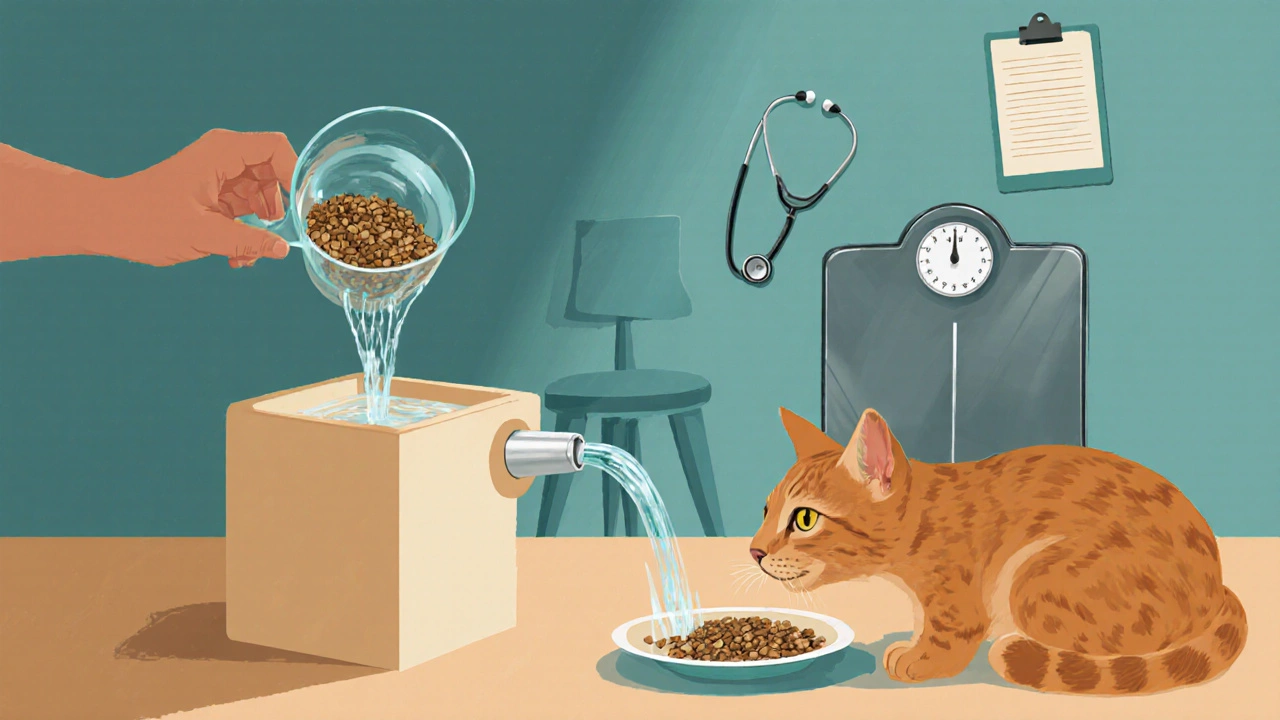
Can Cats Thrive on Dry Food Alone?
The answer hinges on two things: the quality of the kibble you choose and how you manage water intake. High‑grade dry formulas that meet AAFCO standards and include added taurine can theoretically meet all the macronutrient needs of a healthy adult cat.
However, several real‑world factors often push owners toward a mixed diet:
- Moisture Gap: Cats have a naturally low thirst drive. When fed only dry kibble, many don’t drink enough water, leading to concentrated urine and a higher risk of feline kidney disease is a progressive condition where the kidneys lose the ability to filter waste efficiently or urinary crystal formation.
- Potential Nutrient Shortfalls: Even premium dry foods may have lower levels of certain amino acids (like taurine) or fatty acids compared to wet diets that contain actual meat juice.
- Weight Management: Dry kibble is calorie‑dense. Over‑feeding can quickly lead to obesity is excess body fat that raises the risk of diabetes, arthritis, and heart disease in cats.
If you’re prepared to monitor water intake, choose a high‑quality product, and keep an eye on your cat’s weight and urinary health, a dry‑only regimen can work for many indoor cats.
Nutrient Gaps You Need to Watch
Even the best dry formulas can be low in:
- taurine is an essential amino acid for heart and eye health that cats cannot synthesize. Look for a guarantee of at least 0.1% on a dry‑matter basis.
- Moisture content (ideally 8‑12%). Supplement with fresh water, broth, or a water fountain to encourage drinking.
- Omega‑3 fatty acids (EPA/DHA) which support skin, coat, and joint health. Some premium kibble adds fish oil, but the levels are usually lower than wet foods.
Missing these nutrients can manifest as a dull coat, lethargy, or, in severe cases, heart failure. Regular veterinary blood panels can help catch deficiencies early.
Choosing a High‑Quality Dry Food
Not all kibble is created equal. Use this quick checklist when you’re in the pet aisle:
- First Ingredient: Real meat (chicken, turkey, salmon) should be the top entry, not “meal” or “by‑product”.
- AAFCO Statement: Look for a label that says the food is “complete and balanced for adult cats”.
- Added Taurine: Verify the guaranteed analysis includes taurine, or check the ingredient list for “taurine” explicitly.
- Moisture Enhancers: Some brands coat kibble with a thin layer of broth to boost palatability and moisture.
- Calorie Density: Aim for 300-350 kcal per cup for an average 4‑kg indoor cat; adjust based on your cat’s activity level.
- Consumer Reviews: Look for feedback on coat condition, stool quality, and any urinary issues.
Brands that consistently hit these marks include Royal Canin Indoor, Orijen Cat & Kitten, and Acana Regionals. They tend to be pricier, but the health payoff often outweighs the cost.
When to Add Wet Food or Supplements
Even the most diligent dry‑only feeder may need an extra boost. Consider adding wet food or specific supplements in the following scenarios:
- Low Water Intake: If you notice your cat’s water bowl is barely touched, introduce a small amount of wet food (about 1‑2 ounces daily) to raise overall moisture consumption.
- Early Signs of Urinary Trouble: Cloudy urine, straining, or frequent trips to the litter box signal the need for more water and possibly a urinary health supplement.
- Senior Cats: Older felines often have reduced kidney function and benefit from the extra water and softer texture of wet food.
- Weight Management: Wet food is typically lower in calories per gram, making it a useful tool for reducing overall caloric intake.
For targeted supplementation, look for products that add taurine (especially if your dry food’s guarantee is borderline) and omega‑3s from fish oil. Always discuss any supplement plan with your vet.
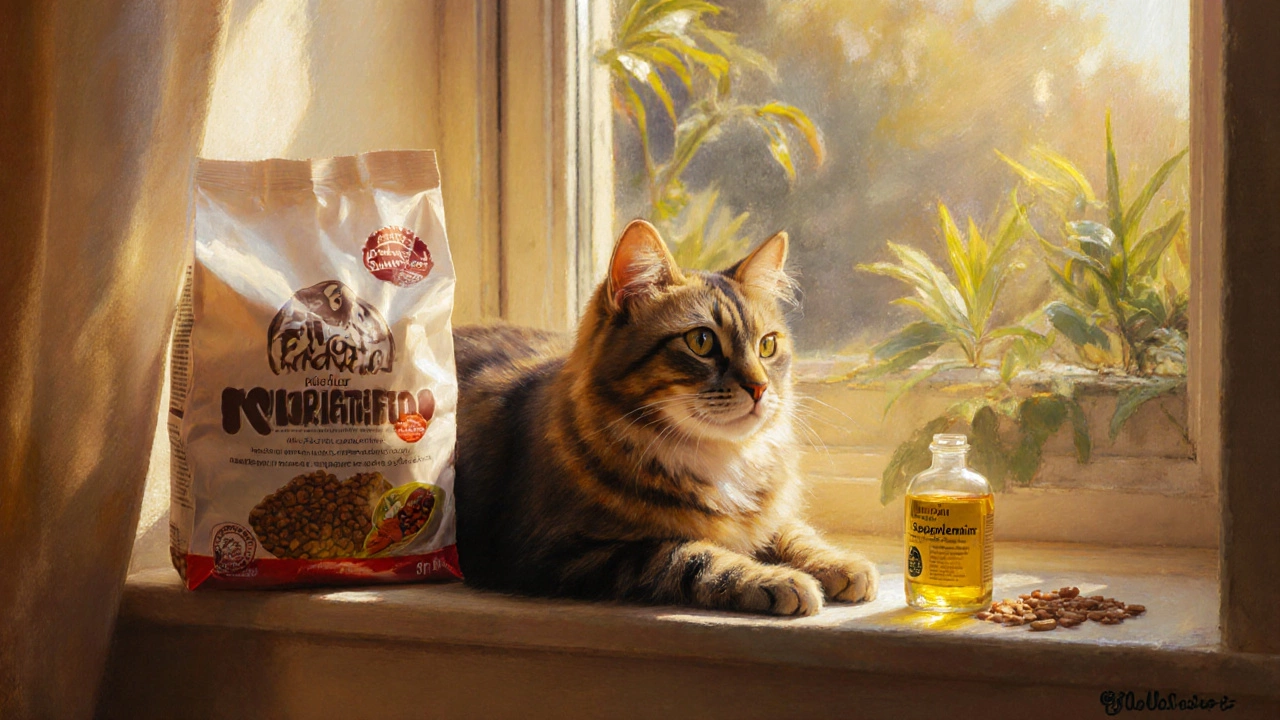
Practical Feeding Guide
Here’s a step‑by‑step routine to keep a dry‑only cat healthy:
- Measure the daily portion based on the label’s kcal recommendation (usually 1 cup = ~300 kcal).
- Divide the portion into two meals to prevent over‑eating and encourage consistent digestion.
- Provide fresh water in a wide, shallow bowl or a cat‑friendly fountain to stimulate drinking.
- Check the litter box daily for urine color and frequency. Dark, concentrated urine may signal dehydration.
- Weigh your cat weekly for the first month. Aim for a stable weight; adjust portions by 5‑10% if you see steady gain or loss.
- Schedule a veterinary check‑up at least once a year for blood work, focusing on kidney markers (creatinine, BUN) and taurine levels.
Stick to this routine, and you’ll catch most problems before they become serious.
Dry vs Wet Cat Food: Key Nutrient Comparison
| Metric | Dry Food | Wet Food |
|---|---|---|
| Moisture | 8‑12% | 75‑80% |
| Protein (dry matter) | 30‑40% | 35‑45% |
| Fat (dry matter) | 10‑15% | 8‑12% |
| Taurine (guaranteed) | 0.1%‑0.2% | 0.15%‑0.3% |
| Calories (kcal per cup) | 300‑350 | ~150 (per 3‑oz pouch) |
The table shows why wet food excels at hydration while dry kibble packs more calories per volume, making portion control crucial.
Frequently Asked Questions
Can a kitten survive on dry food only?
Kittens have a higher water need and a rapidly growing body, so they benefit from the extra moisture and calories in wet food. If you must use dry kibble, choose a formula labeled for kittens and supplement with fresh water or broth throughout the day.
How much water should a cat drinking only dry food get?
A healthy adult cat needs roughly 50‑60ml of water per kilogram of body weight per day. For a 4‑kg cat, that’s about 200‑240ml. If the diet is 100% dry, you should provide at least that amount in fresh water, plus any additional moisture from broth or ice cubes.
Is taurine added to dry cat food?
Reputable dry cat foods always add taurine because the extrusion process destroys natural levels. Look for a guaranteed amount of 0.1% or higher on a dry‑matter basis; otherwise, consider a supplement.
Why do some cats prefer dry food?
Texture plays a big role. The crunchy bite can mimic the feel of small prey and helps some cats feel satisfied longer. Some also enjoy the freedom of free‑feeding, which isn’t practical with wet food.
Can dry food cause urinary crystals?
Low moisture diets can concentrate urine, raising the risk of struvite or calcium oxalate crystals. Counter this by ensuring plenty of fresh water, adding wet meals, or choosing a dry formula with added urine‑supporting compounds like magnesium and potassium.
Next Steps & Troubleshooting
If you’ve switched to a dry‑only diet and notice any of the following, act quickly:
- Dull coat or hair loss: Add a fish‑oil supplement or switch to a dry food with higher omega‑3 content.
- Frequent urination or small, concentrated stools: Increase water intake, introduce a wet meal, or consult your vet for a urinary health formula.
- Weight gain after a month: Re‑calculate the daily kcal target and reduce portion size by 10%.
- Reduced activity or lethargy: Request a blood test to check taurine and kidney markers.
Remember, the goal isn’t to force a strict “dry‑only” rule but to ensure your cat gets the nutrients and hydration it needs. Adjust the diet as your cat ages, changes activity level, or develops health conditions.
By choosing a high‑quality kibble, monitoring water intake, and staying alert to early health signals, you can confidently feed your cat a dry‑only diet without compromising wellbeing.

